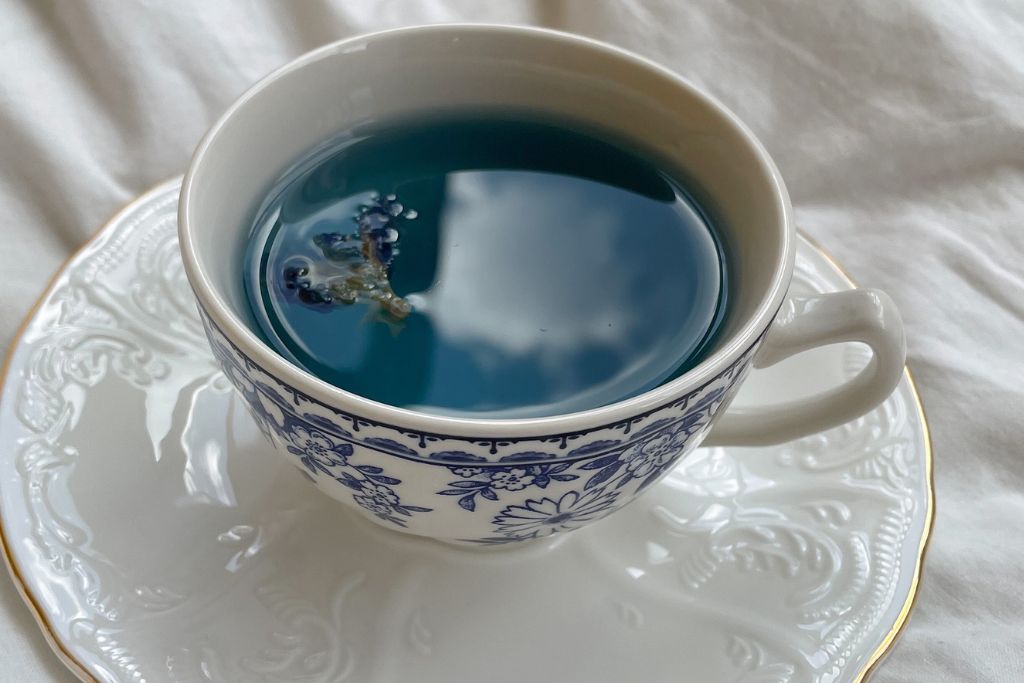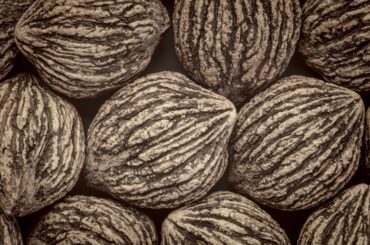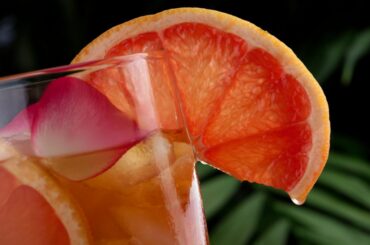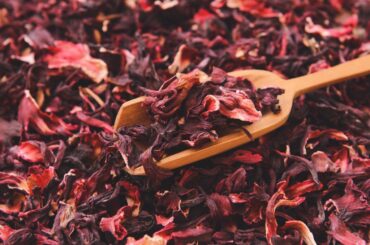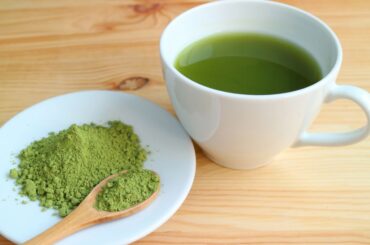Are you curious about how to make butterfly pea tea? Ever wondered what makes this tea so unique? Did you know butterfly pea tea changes color depending on pH levels?
Butterfly pea tea, also known as blue pea flower tea, is a type of herbal tea that is made from the flowers of the Clitoria ternatea plant. These beautiful blue flowers have a natural pigment that gives the tea its vibrant blue color. However, the color of the tea can change to purple or pink when lemon or lime juice is added due to the change in pH.
If you enjoy experimenting with different tea flavors and colors or looking for a refreshing and visually stunning drink, you’ll enjoy learning how to make butterfly pea tea.
What Is Butterfly Pea Tea?
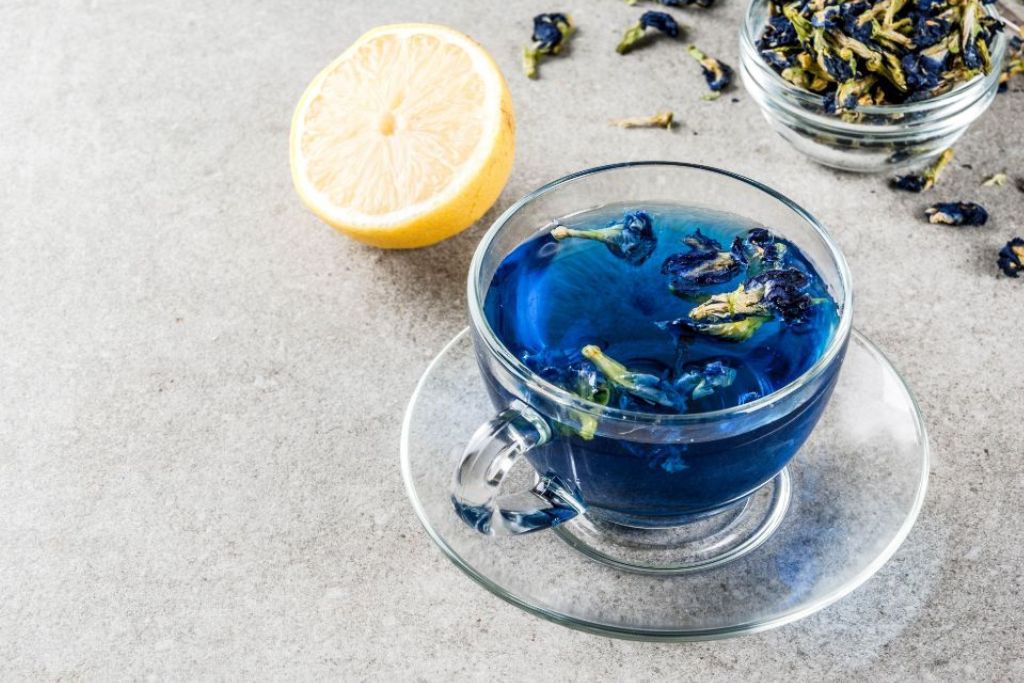
Butterfly pea tea is an extraordinary herbal tea that captivates with its distinct appearance. It has garnered widespread recognition across different regions of the globe, captivating tea enthusiasts with its visual allure.
The butterfly pea flower is native to Southeast Asia and particularly famous in Thailand, Malaysia, and Vietnam. It is commonly used in these regions to make traditional drinks and desserts.
Butterfly pea tea is made by steeping the dried flowers of the Clitoria ternatea plant in hot water. The infusion produces a vibrant blue-colored tea known for its natural blue pigment. But its ability to change color makes butterfly pea tea genuinely fascinating.
When lemon or lime juice is added to the tea, the pH level changes, resulting in a beautiful transformation from blue to purple. This magical color-changing quality has earned butterfly pea tea the nickname “tea that turns purple.” It adds to its appeal for tea enthusiasts and those seeking an intriguing beverage experience.
What Part of Butterfly Pea is Used for Tea?
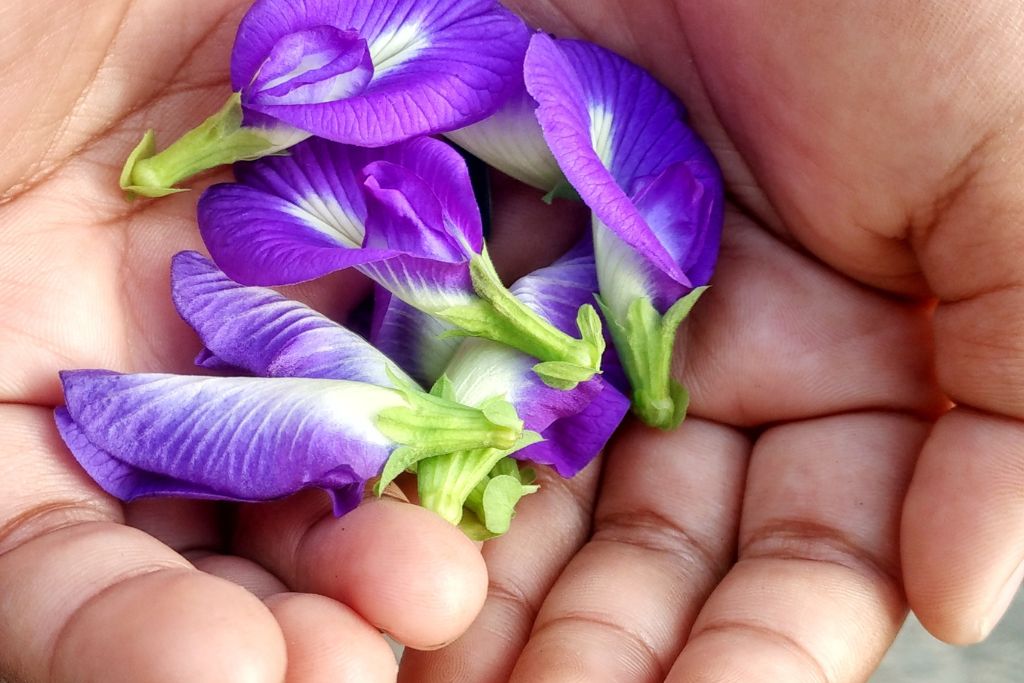
The main ingredient of butterfly pea tea is the dried flowers of the Clitoria ternatea plant. These vibrant blue flowers are carefully harvested and dried to preserve their natural color and flavor.
The dried flowers release their rich pigments and delicate floral aroma when steeped in hot water. This creates a visually stunning and refreshing tea. The use of these beautiful flowers is what gives butterfly pea tea its unique and captivating appeal.
What Does Butterfly Pea Tea Taste Like?
Butterfly pea tea has a mild and subtle flavor profile. It offers a smooth and slightly earthy taste with floral undertones. The tea is flexible and gentle, allowing the natural flavors of the butterfly pea flowers to shine.
Some people describe the taste as delicate and soothing, with a hint of sweetness. The overall experience of drinking butterfly pea tea is refreshing and enjoyable. This makes it a delightful choice for those seeking a gentle, calming tea.
What is Butterfly Pea Tea Good for?
Butterfly pea tea is known for its potential health benefits and is often praised for its antioxidant properties. It is believed to support well-being and may have anti-inflammatory effects. Butterfly pea tea is sometimes used to promote healthy hair and skin.
Butterfly Pea Tea Ingredients
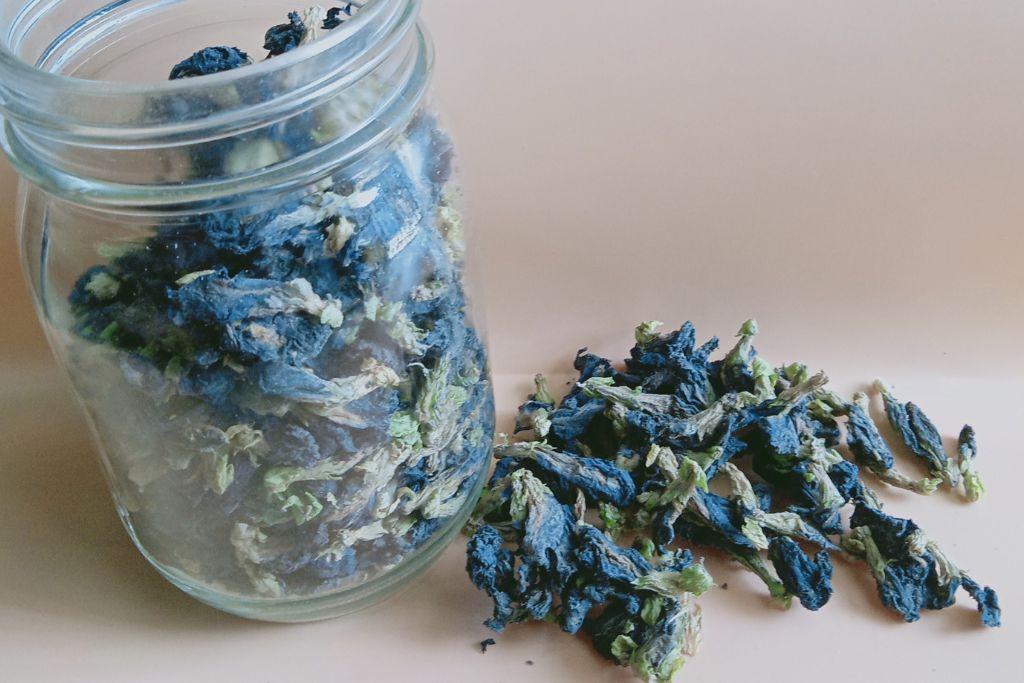
Before we delve into the detailed guide for making butterfly pea tea, let’s look at the necessary ingredients. These simple ingredients will help you create a delicious cup of this unique tea.
To make butterfly pea tea, you will need this butterfly pea tea recipe:
Dried Butterfly Pea Flowers:
The star ingredient of this tea is the dried flowers. They impart a vibrant blue color and delicate flavor. They are essential for creating the signature butterfly pea tea experience.
Hot Water
Hot water is required for steeping the dried flowers and extracting the flavors. Make sure the water is heated to the appropriate temperature for brewing tea.
Here are some optional ingredients:
Lemon or Lime Juice
If you want to witness the magical color transformation of butterfly pea tea, you can add a few drops of lemon or lime juice. These acidic ingredients alter the pH level, turning the blue tea into a beautiful purple hue.
Honey or Sweetener
You can include honey or your preferred sweetener to add sweetness to your tea. This is optional and can be adjusted according to personal taste preferences.
How to Prepare Butterfly Pea Tea Recipe
Indulge in the captivating beauty and flavors of the butterfly pea tea with this simple step-by-step guide. Discover how to make butterfly pea tea that changes color before your eyes.
To prepare butterfly pea tea, follow these steps:
- Boil Water: Start by boiling water in a kettle or saucepan. You’ll need enough hot water to steep the tea.
- Measure the Butterfly Pea Flowers: Measure about one tablespoon of dried butterfly pea flowers for each cup of tea you want to make. Adjust the quantity based on your preference.
- Steep the Flowers: Place the measured butterfly pea flowers in a teapot or a heat-resistant container. Pour the hot water over the flowers and let them steep for about 5 to 7 minutes. This will allow the blooms to release their flavors and vibrant blue color.
- Strain the Tea: After steeping, strain the tea to remove the flowers. You can use a fine-mesh strainer or a tea infuser to separate the liquid from the flowers. This will result in a smooth and clear tea.
- Add Lemon or Lime Juice (Optional): If you want to witness the color-changing effect, add a few drops of lemon or lime juice to the tea. As mentioned earlier, the acidity of these citrus juices will transform the blue tea into a beautiful purple hue.
- Sweeten to Taste (Optional): If desired, you can add honey or your preferred sweetener to enhance the flavor of the tea. Stir well to ensure it dissolves completely.
- Serve and Enjoy: Pour the prepared butterfly pea tea into teacups and enjoy it hot or let it cool for a refreshing iced tea. You can garnish it with a lemon slice or a sprig of mint for added visual appeal.
Tips for Making Butterfly Pea Tea
These tips will help you create a perfect cup of butterfly pea tea, ensuring a delightful experience every time. Following these tips, you can elevate your butterfly pea tea-making skills. You can also create a gratifying and visually stunning beverage experience.
Here are some tips for making butterfly pea tea:
- Use Fresh and High-Quality Butterfly Pea Flowers: Opt for fresh and high-quality dried butterfly pea flowers to ensure a vibrant blue color and optimal flavor in your tea. This will enhance the overall visual appeal and taste of the brew.
- Control the Steeping Time: Pay attention to the steeping time of the flowers. Steeping for too long can produce a bitter taste, while soaking for too short may lead to a lighter color and less intense flavor. Aim for a steeping time of 5 to 7 minutes to achieve a well-balanced brew.
- Experiment with Flavor Combinations: While butterfly pea tea is delightful, explore different flavor combinations. Add herbs, like lemongrass or mint, or other fruit juices. It can be pineapple or passion fruit for a unique twist.
- Serve in Clear Glassware: Serve butterfly pea tea in clear glassware. This allows you to admire the beautiful transition from blue to purple when there is lemon or lime juice.
- Adjust Sweetness to Taste: Sweetness preferences vary, so feel free to adjust the amount of sweetener according to your liking. Start with a small amount, then gradually add more until you achieve the desired level of sweetness.
Butterfly Pea Tea Nutritional Facts
Before we delve into the nutritional facts of butterfly pea tea, it’s important to note that these values are estimated and may vary based on serving sizes. Here is a breakdown of the approximate nutritional content per serving:
- Calories: 0-5 calories
- Carbohydrates: 0-1 gram
- Protein: 0 grams
- Fat: 0 grams
- Saturated Fat: 0 grams
- Cholesterol: 0 milligrams
- Sodium: 0-5 milligrams
- Potassium: 0-10 milligrams
- Sugar: 0 grams
- Vitamin C: 0-2 milligrams
- Calcium: 0-5 milligrams
Disclaimer: It’s essential to remember that these values are minimal since butterfly pea tea is primarily made from the infusion of dried flowers. However, it’s worth mentioning that adding sweeteners or using high-fat milk can increase the calorie and sugar content of the beverage.
5 Butterfly Pea Tea Benefits
Discover how this captivating tea can offer potential advantages for your well-being and enjoyment. While butterfly pea tea shows potential for these benefits, it’s important to note that further scientific research is needed.
This is to understand and confirm its effects. Consulting with a healthcare professional for personalized advice is recommended.
Here are 5 butterfly pea tea benefits:
Rich in Antioxidants
Butterfly pea tea is packed with antioxidants. It includes flavonoids and anthocyanins. These help protect the body against oxidative stress and free radicals.
Potential Anti-Inflammatory Effects
The presence of anti-inflammatory compounds in butterfly pea tea may assist in reducing inflammation in the body, which is linked to various chronic conditions.
Supports Healthy Hair and Skin
The high flavonoid content in butterfly pea tea may contribute to maintaining healthy hair and skin. It promotes collagen production and protects against damage caused by environmental factors.
It May Aid in Digestion
Some studies suggest that butterfly pea tea may have mild digestive benefits. These help to soothe the gastrointestinal system and ease symptoms like bloating and indigestion.
Relaxing and Calming Properties
Butterfly pea tea is often enjoyed for its calming effects. It is believed to have natural soothing properties that can help promote relaxation and reduce stress levels.
FAQs
Does Butterfly Tea Have Caffeine?
No, butterfly pea tea is naturally caffeine-free. It does not contain caffeine, making it suitable for those seeking a caffeine-free beverage. This can be particularly appealing for individuals sensitive to caffeine or prefer to avoid it for various reasons.
What Does Butterfly Pea Tea Do?
Butterfly pea tea is known for its potential health benefits and unique properties. Butterfly pea tea is believed to be rich in antioxidants, which can help protect the body against oxidative stress.
What is Butterfly Pea Tea Supposed to Taste Like?
Butterfly pea tea has a mild and subtle flavor profile. It offers a smooth and slightly earthy taste with floral undertones. The tea itself is not firm or overpowering, allowing the natural flavors of the butterfly pea flowers to shine through.
Can I Drink Butterfly Pea Tea on an Empty Stomach?
Yes, you can drink butterfly pea tea on an empty stomach. Butterfly pea tea is generally considered safe to consume and has no known adverse effects on an empty stomach. But individual sensitivities and preferences may vary.
Does Butterfly Pea Tea Have Side Effects?
Butterfly pea tea is generally considered safe to consume. It does not have any known significant side effects when consumed in moderation. Some people, however, may experience mild digestive discomfort or allergic reactions.

